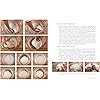






Ready to go? Add this product to your cart and select a plan during checkout. Payment plans are offered through our trusted finance partners Klarna, PayTomorrow, Affirm, Afterpay, Apple Pay, and PayPal. No-credit-needed leasing options through Acima may also be available at checkout.
Learn more about financing & leasing here.
This item is eligible for return within 30 days of receipt
To qualify for a full refund, items must be returned in their original, unused condition. If an item is returned in a used, damaged, or materially different state, you may be granted a partial refund.
To initiate a return, please visit our Returns Center.
View our full returns policy here.
Format: Hardcover
Description
NEW YORK TIMES BESTSELLER • From Portland’s most acclaimed and beloved baker comes this must-have baking guide, featuring recipes for world-class breads and pizzas and a variety of schedules suited for the home baker. There are few things more satisfying than biting into a freshly made, crispy-on-the-outside, soft-and-supple-on-the-inside slice of perfectly baked bread. For Portland- based baker Ken Forkish, well-made bread is more than just a pleasure—it is a passion that has led him to create some of the best and most critically lauded breads and pizzas in the country. In Flour Water Salt Yeast, Forkish translates his obsessively honed craft into scores of recipes for rustic boules and Neapolitan-style pizzas, all suited for the home baker. Forkish developed and tested all of the recipes in his home oven, and his impeccable formulas and clear instructions result in top-quality artisan breads and pizzas that stand up against those sold in the best bakeries anywhere. Whether you’re a total beginner or a serious baker, Flour Water Salt Yeast has a recipe that suits your skill level and time constraints: Start with a straight dough and have fresh bread ready by supper time, or explore pre-ferments with a bread that uses biga or poolish. If you’re ready to take your baking to the next level, follow Forkish’s step-by-step guide to making a levain starter with only flour and water, and be amazed by the delicious complexity of your naturally leavened bread. Pizza lovers can experiment with a variety of doughs and sauces to create the perfect pie using either a pizza stone or a cast-iron skillet. Flour Water Salt Yeast is more than just a collection of recipes for amazing bread and pizza—it offers a complete baking education, with a thorough yet accessible explanation of the tools and techniques that set artisan bread apart. Featuring a tutorial on baker’s percentages, advice for manipulating ingredients ratios to create custom doughs, tips for adapting bread baking schedules to fit your day-to-day life, and an entire chapter that demystifies the levain-making process, Flour Water Salt Yeast is an indispensable resource for bakers who want to make their daily bread exceptional bread. Read more
Publisher : Ten Speed Press; 43633rd edition (September 18, 2012)
Language : English
Hardcover : 272 pages
ISBN-10 : 160774273X
ISBN-13 : 39
Item Weight : 3.53 ounces
Dimensions : 8.2 x 0.96 x 10.2 inches
Best Sellers Rank: #270 in Books (See Top 100 in Books) #1 in Pizza Baking #2 in Bread Baking (Books)
#1 in Pizza Baking:
#2 in Bread Baking (Books):
